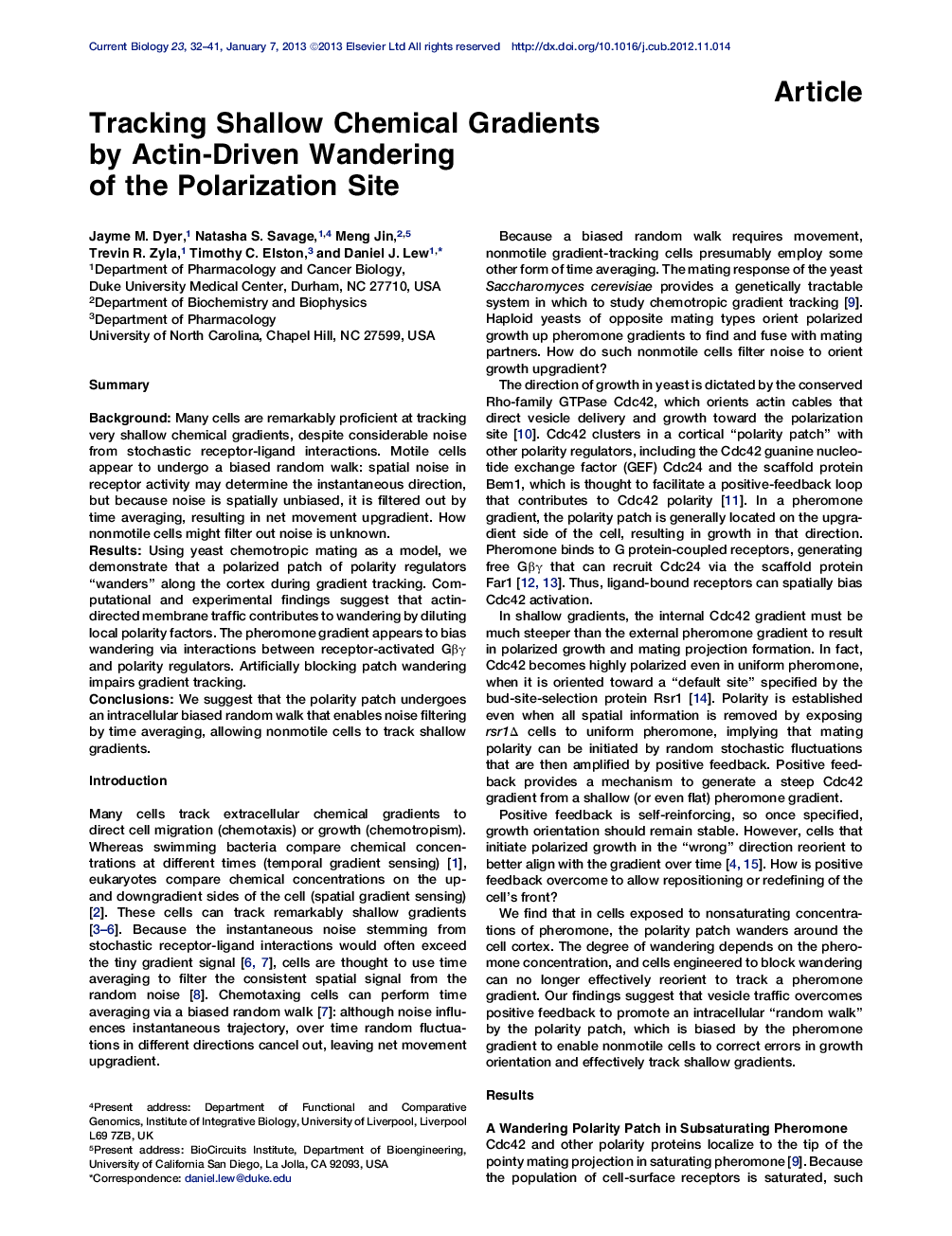| Article ID | Journal | Published Year | Pages | File Type |
|---|---|---|---|---|
| 2043180 | Current Biology | 2013 | 10 Pages |
SummaryBackgroundMany cells are remarkably proficient at tracking very shallow chemical gradients, despite considerable noise from stochastic receptor-ligand interactions. Motile cells appear to undergo a biased random walk: spatial noise in receptor activity may determine the instantaneous direction, but because noise is spatially unbiased, it is filtered out by time averaging, resulting in net movement upgradient. How nonmotile cells might filter out noise is unknown.ResultsUsing yeast chemotropic mating as a model, we demonstrate that a polarized patch of polarity regulators “wanders” along the cortex during gradient tracking. Computational and experimental findings suggest that actin-directed membrane traffic contributes to wandering by diluting local polarity factors. The pheromone gradient appears to bias wandering via interactions between receptor-activated Gβγ and polarity regulators. Artificially blocking patch wandering impairs gradient tracking.ConclusionsWe suggest that the polarity patch undergoes an intracellular biased random walk that enables noise filtering by time averaging, allowing nonmotile cells to track shallow gradients.
Graphical AbstractFigure optionsDownload full-size imageDownload high-quality image (305 K)Download as PowerPoint slideHighlights► A wandering polarity site distributes growth in yeast cells responding to pheromone ► Wandering, but not polarity establishment, is actin dependent ► A mathematical model incorporating polarity and vesicle traffic exhibits wandering ► Blocking wandering impairs gradient tracking
